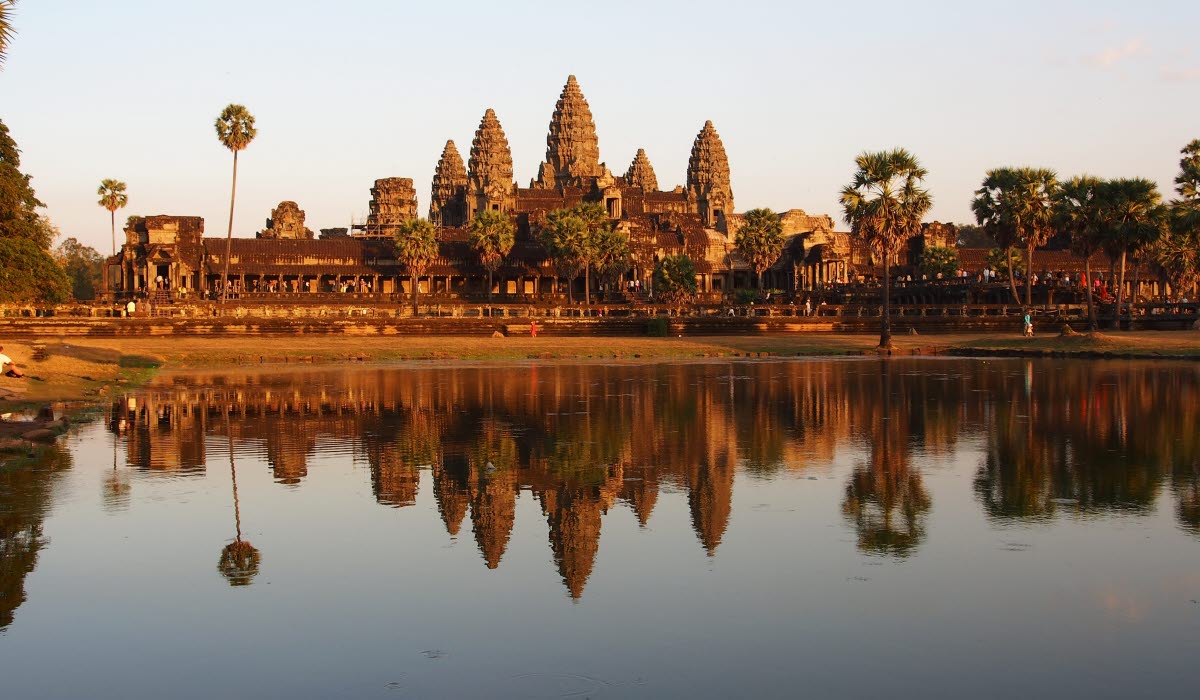Best known for the sprawling temple complex of the Angkor Wat World Heritage site, Cambodia has traditionally been viewed as a tourist attraction rather than a business opportunity. However, it was the 6th fastest growing economy in the world in 2018 according to the IMF, with real GDP growth of 7.2%.
Rapid growth is not something new for Cambodia. It has experienced a stable high GDP growth level since the early nineties and was officially classified as a lower-middle-income nation in 2017. The main drivers of the Cambodian economy are long-established: tourism, agriculture and the garment industry. But new horizons are opening up as the country sets ambitious development targets.
The inflow of foreign direct investment has risen sharply since 2015 – much due to stronger links being forged with China’s Belt and Road Initiative. In 2018 alone, FDI inflows to Cambodia grew by 25% reaching a total of USD 3.5 billion. Cambodia is showing its commitment to sustainable development and is strengthening ties with its neighbouring countries in the ASEAN bloc.
Three key opportunity areas for Swedish companies
While the Covid-19 outbreak has led analysts to revise down the country’s GDP growth forecast for 2020, from 6.8% to 2.3%, growth is expected to rapidly pick up steam. Interestingly, the 2021 forecast is currently set at 5.7% despite the disruption.
So, what’s underpinning this optimism you might ask? Here’s a look at three key growth sectors that collectively add up to a compelling argument for why Swedish companies should consider the Cambodian market.
The garment industry: Accounting for 65% of all factories in the country and 75% of all exports, the garment industry is the backbone of Cambodia’s economy. Nonetheless, 90% of all companies in the sector are engaged in low value-add Cut, Make, Trim (CMT) work. Garment sourcing from Cambodia is attractive, as some Swedish companies know, but modernisation plans are now being ramped up. The government is actively encouraging the sector to upgrade machinery, improve productivity and incorporate more parts of the value chain.
This will require improved power supplies, better batteries, more industrial machines and worker training – all areas where Swedish OEMs and suppliers can provide energy-efficient technologies and advanced expertise.
Infrastructure and construction: A booming real estate market and comprehensive infrastructure upgrades are attracting major investments. The upswing in construction (+57% from 2018 to 2019) is driving demand for improved construction methods, new building technologies and smart energy solutions. New airports, railways and ports are either in the planning phase or under construction.
These initiatives will not only open the country to increased international trade but also reduce the costs of domestic transportation and bring down prices of consumer goods.
Renewable energy: Cambodia’s domestic energy supply has grown steadily at around 8% per year over the past decade. Having traditionally relied on coal to a great extent, which accounted for 54% of energy production in 2017, it is now being phased out. In 2018, the dependency on coal for energy had declined to 40% mostly thanks to new hydropower plants coming online.
Cambodia is also an excellent candidate for solar energy with 6-9 hours of sunlight per day. Indeed, for the 30% of the population that still rely on off-grid energy, solar home solutions represent a big market opportunity. Solar panels, batteries, and transistor solutions for hydropower are in high demand nationwide. Early movers from the Nordics in smart energy and cleantech are already contributing to solutions provided by Chinese or Vietnamese partner companies.
The China connection
Cambodia looks poised to continue on its upward trajectory. More and more foreign companies are drawn by its promising economic prospects, low cost of living and strategic location in the heart of ASEAN. But none more so than Chinese entities.
In 2018, Cambodia attracted USD 3.48 billion in foreign direct investment of which 42% came from China. A big part of Cambodia’s current and future growth is linked to China’s growing regional activities through the Belt and Road initiative. China has a major stake in several key industries and owns no less than 90% of all Cambodian garment factories.
The strong presence of China’s business community means that doing business here requires not only Khmer and English proficiency, but increasingly also Chinese language skills. That’s why Swedish companies should explore the option of working with established Chinese contacts to get a foothold in Cambodia.
As a further recommendation before entering the market, consider these four elementary steps:
• Understand local business needs and communicate with potential customers on their terms. Be it the local Khmer, Chinese companies or western expats – speak their language!
• Cambodia is growing fast, but to really take advantage of the opportunities you need a deep understanding of what makes the market ‘tick’. Invest time in forging valuable connections on the ground.
• Location is everything. Choosing the right location can impact transport costs, logistics flow and the reliability of energy supply. Cambodia has more than 40 Special Economic Zones. Identify the perfect match for your business!
• Cambodian customers are receptive to foreign brands and companies, but it might be necessary to spend considerable time and resources on educating the market.
A helping hand
Swedish companies have plenty to offer in terms of facilitating the next transformational phase that will boost Cambodia’s competitiveness on the global stage.
Want to know how your company can tap into the opportunities? Business Sweden provides all the advice and assistance you need, from feasibility studies in the pre-establishment phase to support on the ground for setting up operations. Get access to our local knowledge and expertise.





